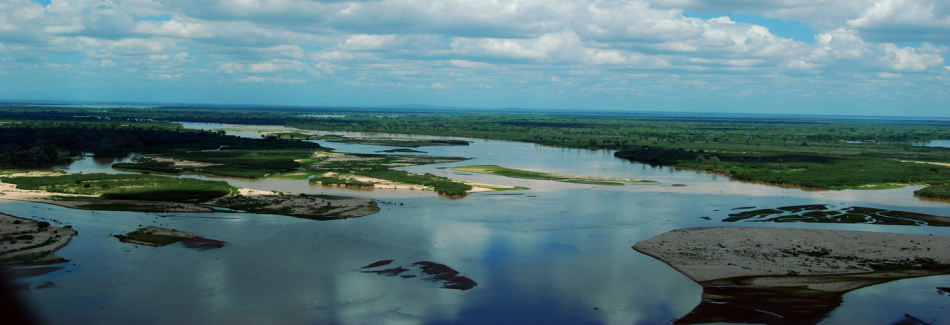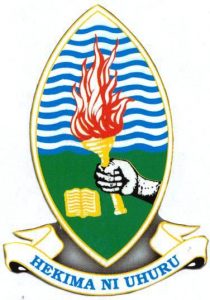
Background
Tanzania is one of the world’s megadiverse countries and its biodiversity has important economic, technological and social implications. Tanzania’s agriculture, livestock, forestry and fisheries sectors account for 65% of the country’s GDP and 80% of total employment. However, rapid population growth in both rural and urban areas, unplanned human and livestock migrations, habitat fragmentation, and overexploitation are eroding Tanzania’s environmental resources.
Tanzania’s Rufiji River Basin exemplifies the tensions between growth and environment. The Basin covers an area of 177,420 square kilometers and plays a critical role in Tanzania’s development plans, particularly as they relate to food and water security.
Many agriculture and water projects are planned in the basin as part of the government’s ‘Big Results Now’ (BRN) Initiative. At the same time, there are competing water and land uses in the basin: activities such as afforestation of mountain grasslands, sugarcane farming, deforestation of mangroves, planned dam construction for irrigation, and pastoral livestock systems make it a challenge to sustainably manage the watershed.
Scope of work
The TEEB Tanzania study assesses land use tradeoffs in the Rufiji River Basin in order to conduct scenario analyses to inform policies for prudent basin-wide management.
The study divides the Rufiji Basin into highlands, midlands, and lowlands:
- The highlands regions of the basin are characterized by mountainous grasslands that are being replaced with trees for timber. TEEB will use scenario analysis to assess the impact of this afforestation on ecosystem services, such as:
 Provision of food: changes in livestock production due to the reduction of grasslands will be assessed by comparing business as usual (afforestation) with alternate scenarios. The study will also account for cases where the business as usual scenario produces food (e.g. fruit orchards).
Provision of food: changes in livestock production due to the reduction of grasslands will be assessed by comparing business as usual (afforestation) with alternate scenarios. The study will also account for cases where the business as usual scenario produces food (e.g. fruit orchards).
- In the midlands, a scenario analysis will be carried out to examine the impacts of community-based land use planning on livestock
management on ecosystem services, such as:
 Provision of fresh water: changes in downstream water availability and quality (as a result of livestock management practices and/or the application of pesticides and fertilizers for crop cultivation) will be measured.
Provision of fresh water: changes in downstream water availability and quality (as a result of livestock management practices and/or the application of pesticides and fertilizers for crop cultivation) will be measured.
- The lowlands of the Basin are characterized by mangrove ecosystems that are under threat from deforestation and upstream water use, both of which affect water availability and quality. A scenario analysis in this area will examine the impacts of mangrove deforestation on ecosystem services, such as:
 Provisioning of food: the analysis will assess changes in fish and prawn production due to changes in habitat (such as deforestation of mangroves or changes in water quality and quantity), as well as changes in rice production.
Provisioning of food: the analysis will assess changes in fish and prawn production due to changes in habitat (such as deforestation of mangroves or changes in water quality and quantity), as well as changes in rice production.
Publications and resources
Events and meetings
- TEEB Tanzania Final Workshop (Dar es Salaam, May 2017)
- TEEB Country Study International Workshop (Cancún, December 2016)
- TEEB Tanzania Scoping Workshop (Dar es Salaam, May 2014)
This presentation given by Dr Andrea Bassi to the Africa Natural Accounting Community of Practice refers to the TEEB Tanzania work, as a useful entry point to explaining scenario analysis and modelling fit into the TEEB Approach.
Status: Ended
Other partners
- Ministry of Natural Resources and Tourism
- Ministry of Agriculture, Food Security and Cooperatives
- President’s Office Planning Commission
- Ministry of Livestock and Fisheries Development
- Ministry of Water
- Tanzania Wildlife Research Institute
- Tanzania Forestry Research Institute
- Ardhi University
- UN Development Programme (UNDP)
- Tanzania Forest Services Agency
- Ministry of Land, Housing and Human Settlement Development
This study is supported by the European Commission as part of the “Reflecting the Value of Ecosystems and Biodiversity in Policy-Making” project.



